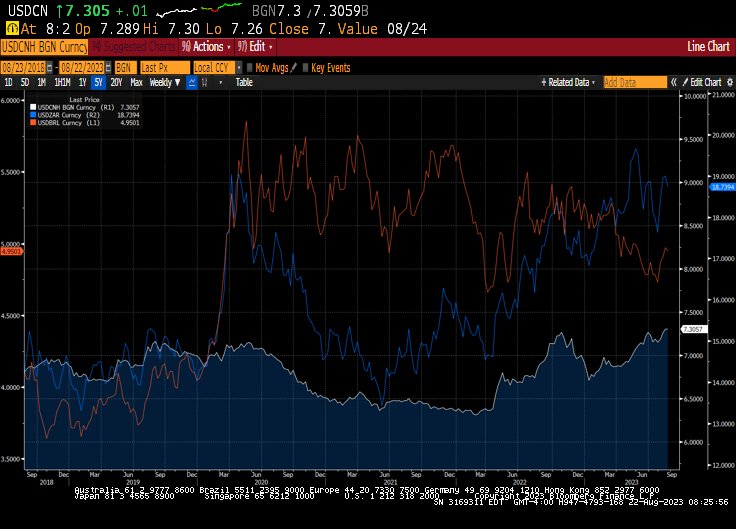- Xi meets Ramaphosa and discuss how to bolster trade in their own currencies
- Yuan still weakens despite PBOC’s most forceful fixing on record
- BRICS might lead to more investment in Africa, potentially bolstering rand
The annual BRICS Summit begins in Johannesburg with China’s President Xi meeting South African President Ramaphosa. China and India have enjoyed 25 years of diplomatic ties and are looking to bolster trade and investment with more countries. The three-day summit will be attended by leaders of China, India, Brazil and South Africa, as well as 30 African leaders. Russian President Putin will be participating via video conference as he has an international arrest over alleged war crimes in Ukraine. Russian Foreign Minister Lavrov will represent Russia at the summit.
BRIC nations make up a quarter of the global economy, so their voice will clearly be listened to, especially if they expand. So far, 22 other countries have formally applied to join the bloc, but it seems difficult for the institution given they do not have a BRICS currency that can challenge the dollar. The current members have lots of challenges to go all-in with de-dollarization and embrace a BRICS currency. India does not want a China-led initiative. Given all the sanctions Russia is facing, they have billions of rupees that are stranded. There is no easy solution that can address all the problems facing the key members, which means they will take small steps, which include expanding use of a development bank to help with lending.
5-year USD/CNH, USD/INR, and USD/BRL
The 5-five year chart above shows how robust the dollar has been against the yuan and rupee in 2023, with Brazil and their attractive interest differential being the one standout. Alternatives to the dollar in trade will grow, but for now the big risk is the great refinancing that will occur over the next year could lead to extreme turmoil for emerging markets and that might keep the dollar supported against most of the BRIC currencies.
The weekly USD/CNH and USD/INR chart below exemplifies how overbought this dollar trade has become. There is a lot of macro risk on the table this week and FX markets could see either a strong extension of dollar strength or a major pullback.
Content is for general information purposes only. It is not investment advice or a solution to buy or sell securities. Opinions are the authors; not necessarily that of OANDA Business Information & Services, Inc. or any of its affiliates, subsidiaries, officers or directors. If you would like to reproduce or redistribute any of the content found on MarketPulse, an award winning forex, commodities and global indices analysis and news site service produced by OANDA Business Information & Services, Inc., please access the RSS feed or contact us at info@marketpulse.com. Visit https://www.marketpulse.com/ to find out more about the beat of the global markets. © 2023 OANDA Business Information & Services Inc.





